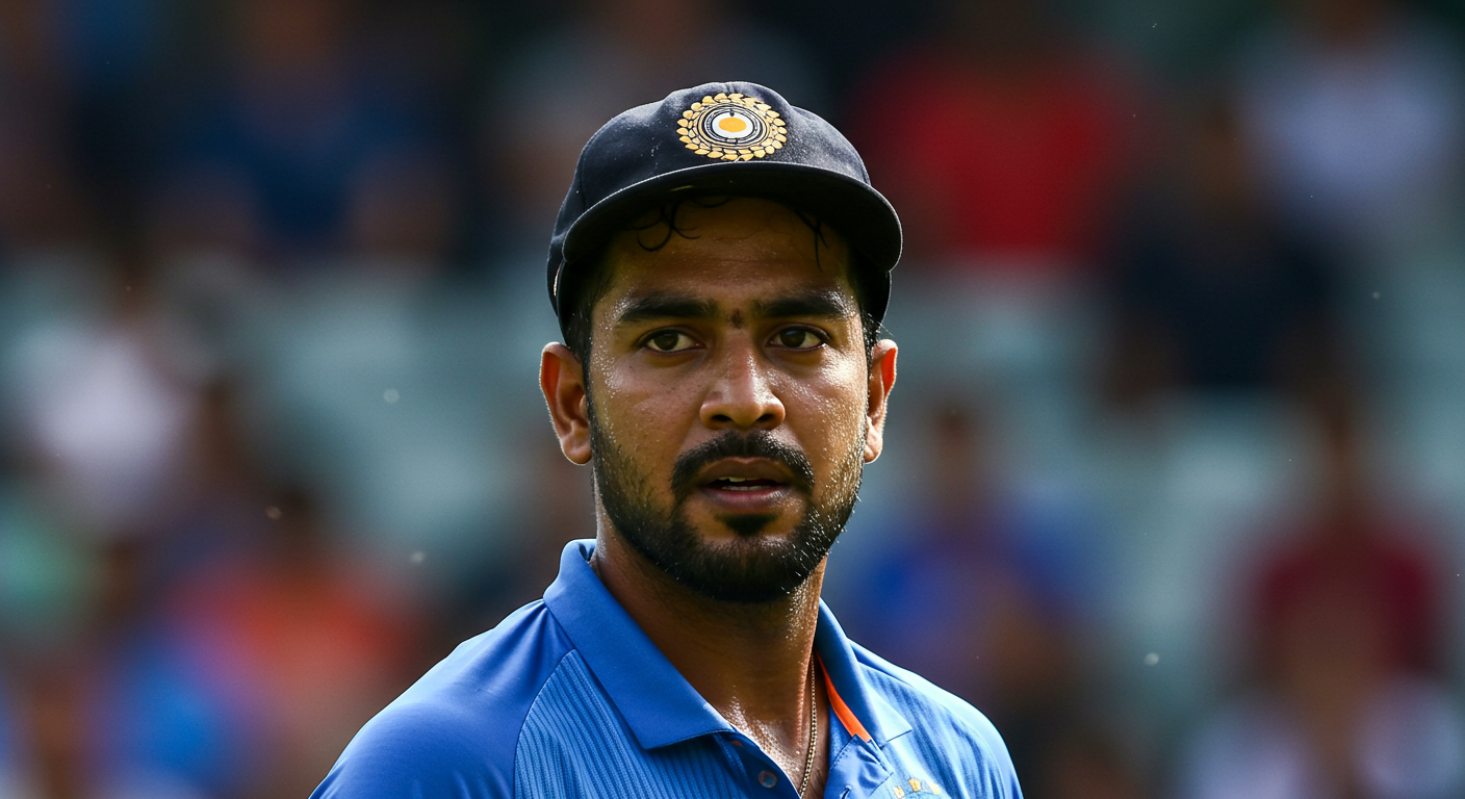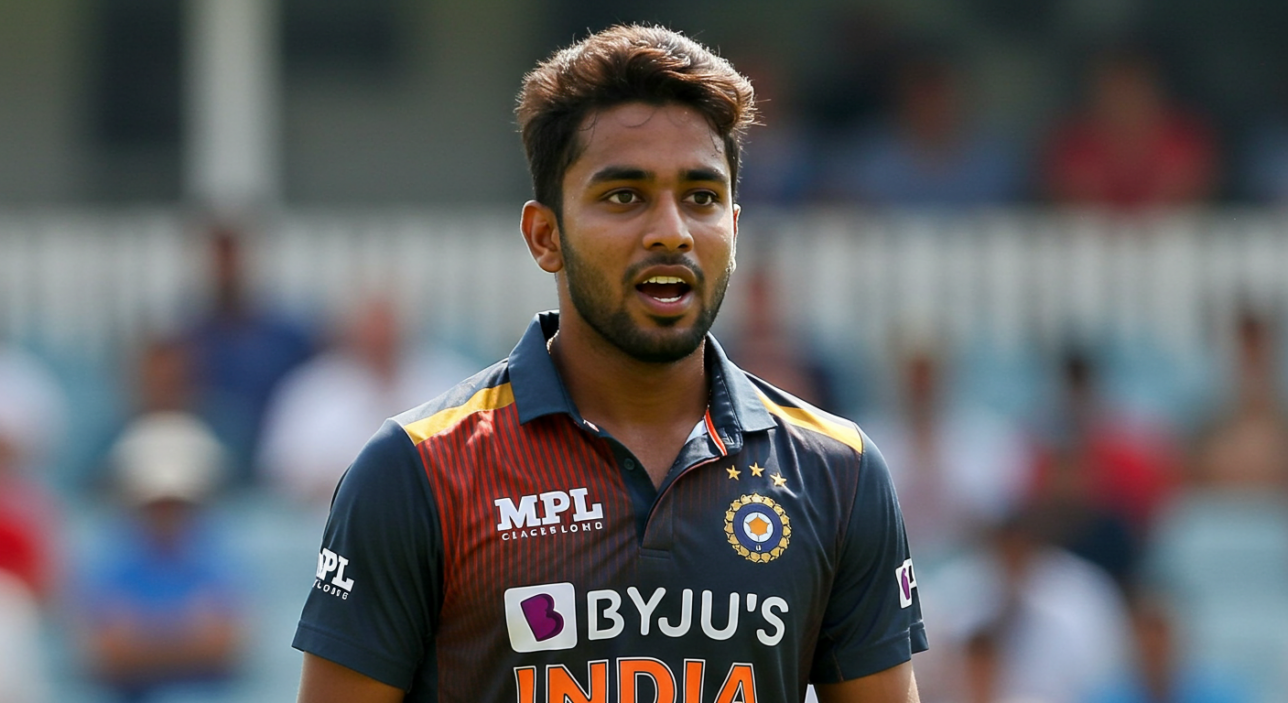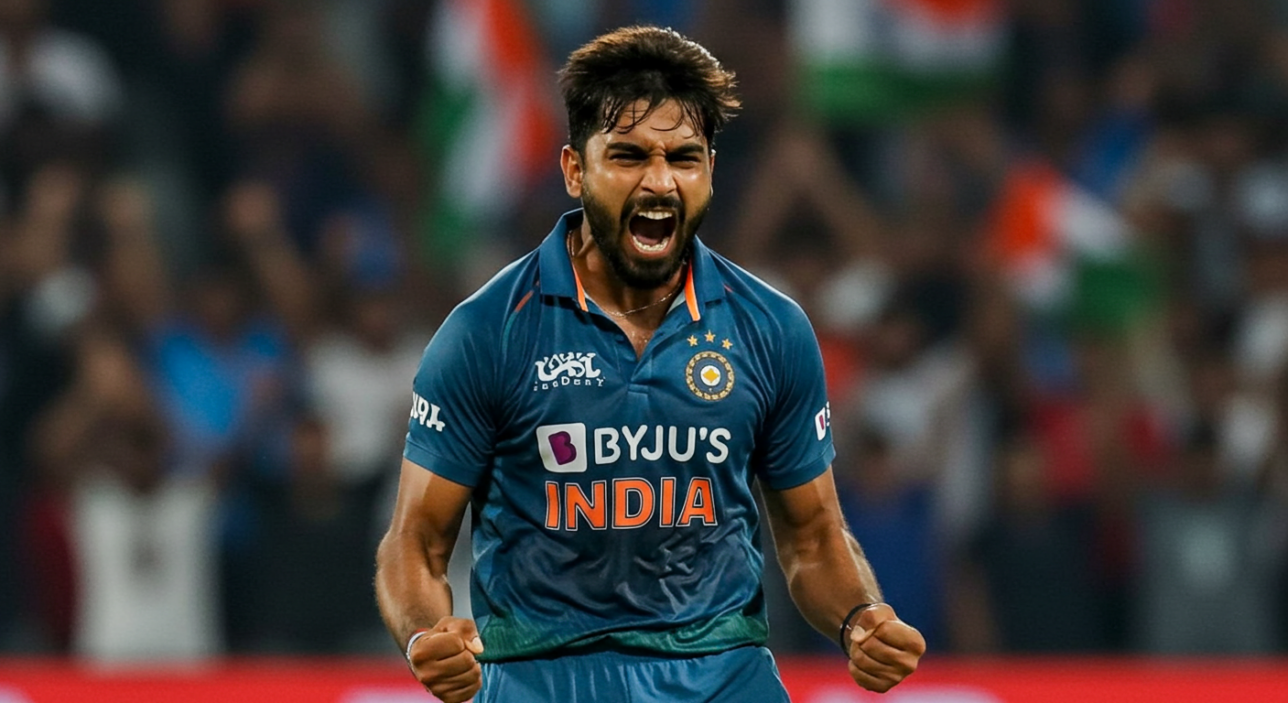
Ravindra Jadeja: From Utility Player to Undroppable Star
There was a time when Ravindra Jadeja was little more than a meme in Indian cricket circles. Labelled Sir Jadeja in jest, he was viewed more for his quirks than his contributions—picked sporadically, doubted often, and confined to the fringes of a side brimming with stars. He bowled left-arm spin with economy, batted low down with flashes of promise, and fielded like a man possessed. But none of it added up to true superstardom.
Today, that perception is not only outdated—it’s irrelevant. Jadeja is no longer a bits-and-pieces cricketer. He’s no longer just a fielding highlight reel. He’s become indispensable, a genuine match-winner across formats. Whether it’s tying down ends in Tests, breaking partnerships in white-ball cricket, launching a late-overs assault with the bat, or running out the opposition’s best player with a bullet throw—Jadeja now influences results, not just moments.
This article explores his journey from a stopgap pick to a player India can’t afford to drop. We’ll dissect the turning points, his statistical rise, and the mindset shift that turned ridicule into reverence. Jadeja’s career isn’t just a story of improvement—it’s a lesson in resilience, role evolution, and silent dominance.
1. The Early Years: A Player Without a Defined Role

When Ravindra Jadeja first entered international cricket in 2009, he was immediately difficult to categorise. He wasn’t a specialist batter, nor a frontline spinner. He bowled tidy overs, fielded brilliantly, and could chip in with the bat. But in an Indian team filled with all-time greats, that wasn’t enough to guarantee selection.
He earned his first real attention during the 2008 U19 World Cup and then in the IPL, where his performances for Rajasthan Royals under Shane Warne earned him the nickname “Rockstar.” But even then, he was more a supporting act than the main draw. His early ODI career saw modest returns with both bat and ball—his strike rotation was laboured, his bowling lacked penetration, and he often found himself in and out of the side.
To make matters worse, a forgettable performance in the 2009 T20 World Cup semi-final—where his slow batting arguably cost India a chase—made him an easy target for fans and pundits alike. The memeification of “Sir Jadeja” began not in celebration, but in sarcasm.
At this stage, Jadeja was playing not to win games, but to justify his inclusion. He wasn’t failing spectacularly, but he wasn’t standing out either. For many, he represented the archetype of a utility player—valuable in bits, expendable in the big picture.
But that’s exactly what makes his transformation so compelling. He didn’t change overnight. He adapted incrementally, turning every limitation into an advantage. And soon, he’d begin showing flashes of the player who would one day be impossible to ignore.
2. Test Match Transformation: The Red-Ball Resurrection
If Jadeja’s early ODI years were marked by hesitation and inconsistency, his Test career revival told a very different story. Once seen as a white-ball specialist with limited utility in the longer format, Jadeja evolved into one of the most complete red-ball all-rounders of his generation.
The turning point came during India’s 2016–17 home season. On spin-friendly tracks, Jadeja was no longer just holding an end—he was attacking, controlling, and often outperforming Ravichandran Ashwin. In the five-Test series against England, he took 26 wickets at an average under 25 and backed it up with crucial lower-order runs. His 10-wicket haul and unbeaten 51 in Chennai sealed both the match and the series.
What made Jadeja lethal in Tests was his discipline through simplicity. He didn’t turn the ball extravagantly, but his accuracy, subtle variation in pace, and consistent length made him impossible to ignore. He created pressure relentlessly, especially in tandem with Ashwin, forming a spin duo that was both stifling and incisive.
And with the bat, his transformation was equally sharp. From being a scratchy No. 8, he matured into a reliable No. 6 or 7—capable of counterattacking when needed and defending with grit when required. His technique improved, his temperament matured, and his shot selection became more selective and precise.
Perhaps most symbolic was his 100 at Lord’s in 2022, where he blended flair with responsibility on a pitch that offered bounce and swing. It wasn’t just about the milestone—it was about the statement: Jadeja could no longer be left out of overseas Tests.
Today, Jadeja boasts a Test batting average in the mid-30s and a bowling average below 25—elite territory for an all-rounder. From a passenger in the format to a driver of victories, his red-ball rise was not just redemption—it was reinvention.
3. White-Ball Wizardry: Finisher, Floater, and Fielding Genius

While Jadeja’s Test renaissance was brewing quietly, his white-ball revolution was equally transformative—and far more visible. No longer just a middle-overs container, Jadeja became India’s go-to finisher, capable of playing explosive cameos and closing out tight chases.
The IPL played a huge role. Under MS Dhoni at Chennai Super Kings, Jadeja gained clarity about his role. Given the licence to hit at the death, he began scoring faster without compromising on shot quality. In the 2021 IPL season, he struck at over 145, including an unforgettable assault on Harshal Patel where he took 37 runs in a single over. That blitz wasn’t just entertainment—it was confirmation of his ability to change games in minutes.
With the ball, he continued to offer control and economy, particularly in T20s. Jadeja isn’t a mystery spinner, but his ability to bowl flat, attack the stumps, and force mistakes makes him ideal for containing set batters during the middle overs. His economy in the powerplay and during overs 7–15 remains among the best for a left-arm spinner.
But what truly elevates Jadeja in white-ball formats is his fielding. His throwing arm, ground coverage, and ability to create run-outs from nowhere make him a 3D player in the truest sense. Whether it’s a bullet throw to dismiss Steve Smith or a flying catch at backward point, Jadeja’s fielding has saved India dozens of runs every match.
The result? He’s no longer just a squad player. In ODIs and T20Is, Jadeja is now seen as the glue that holds together fragmented line-ups, offering flexibility, calm under pressure, and the ability to turn a game in the span of two overs—whether with bat, ball, or brilliance in the field.
4. Mentality Over Metrics: Jadeja’s Silent Steel
While Ravindra Jadeja’s statistical transformation is well-documented, it’s the evolution of his mentality that truly defines his rise. Jadeja has never been one for loud statements or on-field theatrics. But beneath the stoic expressions and understated persona lies a player of immense grit, clarity, and internal fire.
What sets Jadeja apart is his ability to absorb criticism and respond with performance. In the early 2010s, he was mocked relentlessly—not just by fans but by sections of the media. Few players survive being the butt of national sporting jokes. Fewer still turn it into fuel. Jadeja did.
He didn’t plead for roles or visibility. He simply refined his game in silence. Whether it was improving his shot selection, becoming a sharper fielder, or adding subtle tricks to his bowling, Jadeja’s development was methodical. He is not a cricketer who thrives on hype—he thrives on execution.
One example of his mental resilience came during the 2019 World Cup semi-final against New Zealand. After being dropped earlier in the tournament, he was recalled and then delivered an astonishing 77 off 59 under intense pressure, nearly rescuing a hopeless chase. He also took a crucial wicket and ran out Ross Taylor—doing everything in his power to drag India across the line.
That knock wasn’t just about runs—it was about defiance. The raised bat, the stare, the celebration directed toward the commentary box—it was rare emotion from a man who usually lets the scorecard speak for him.
In an era of chest-thumping aggression, Jadeja represents something quieter—but no less powerful. A resilience rooted in composure and purpose. And in elite sport, that calmness under pressure can be the difference between a player who features—and one who defines.
5. Big Tournament Impact: From Support Act to Scene-Stealer

Across ICC tournaments, Jadeja’s value to India has steadily shifted from a tactical inclusion to a central cog. While other all-rounders have come and gone, Jadeja’s presence in the playing XI during major events is now a given—and often, he’s the one delivering in crunch moments.
In the 2013 Champions Trophy, Jadeja was Player of the Match in the final against England, taking 2/24 and scoring a vital 33*. That performance laid the foundation for his reputation as a tournament man—someone who raises his game when the pressure peaks.
Fast forward to the 2019 World Cup, and despite being benched for much of the tournament, his return in the semi-final was explosive. As mentioned earlier, his 77 off 59 nearly turned an unwinnable game. But it wasn’t just the batting—it was the totality of his performance. Bowling, fielding, running between the wickets—every element was sharp, hungry, and decisive.
In the 2021 and 2022 T20 World Cups, he brought balance to the side in ways that didn’t always show up on highlight reels. He held one end with the ball, kept the scoring rate in check, and fielded like a one-man boundary patrol. In short tournaments, where roles are magnified and mistakes amplified, Jadeja has become the low-error, high-impact player every side dreams of.
Perhaps the most telling sign of his growth is how captains now use him. He’s not just a floater or defensive option—he’s a strategic asset, often saved for pivotal overs or key chases. From support act to scene-stealer, Jadeja’s big-stage performances have finally cemented his image as someone who doesn’t just contribute—he delivers when it matters most.
6. The Present-Day Blueprint: Jadeja’s All-Format Relevance
By 2025, Ravindra Jadeja is no longer a squad filler—he’s a blueprint for what a modern all-rounder should be. Across formats, continents, and conditions, he brings balance, versatility, and consistency. And unlike many who fade with age or become format-specific, Jadeja has only deepened his impact.
In Test cricket, he’s one of the few bowlers who can hold an end in Australia, exploit rough patches in India, and contribute meaningful runs abroad. In ODIs, he bats at No. 6 or 7 and offers full quota overs with economy under five. In T20Is, he’s a rare commodity—someone who can bat anywhere from 5 to 8, bowl two to four overs on any surface, and field as though every run saved is worth double.
No other Indian player offers this trifecta without a significant drop-off in any department. He’s not a part-time spinner like Hardik Pandya, not a lower-order only hitter like Axar Patel, and not a specialist fielder. He is all of them, and more.
What also stands out is his fitness and durability. Jadeja’s commitment to fielding standards and physical conditioning has allowed him to stay relevant in a game where careers are increasingly short and workloads brutal. He plays back-to-back series, adapts to new roles seamlessly, and rarely looks out of place.
And that’s what separates him from others who wear the all-rounder label. Jadeja’s value isn’t abstract. It’s visible in every tight contest, every middle-over squeeze, every 30 off 15 that tilts the chase. He is India’s insurance policy, pressure valve, and wildcard—all rolled into one.
Ravindra Jadeja: The Journey from Mockery to Mastery

There are few stories in modern cricket as quietly powerful as Ravindra Jadeja’s. What began as a career marked by ridicule, underachievement, and a lack of clear identity has transformed into one of complete cricketing authority. Today, he is not a piece of the puzzle—he’s the part the team is built around.
His journey matters because it wasn’t explosive. It wasn’t built on viral knocks or endless hype. It was incremental. From fixing his technique to reading game situations better, from becoming a better fielder to refining his match temperament—Jadeja improved in every direction without ever demanding the spotlight.
Now, he doesn’t need to. Because the spotlight follows him.
Whether it’s a clutch run-out, a game-changing spell, or a back-against-the-wall 40 not out, Jadeja’s fingerprints are found all over India’s key victories. He is no longer a luxury option—he is a necessity, and perhaps the most complete cricketer India has produced since the days of Kapil Dev.
From utility player to undroppable star, Ravindra Jadeja’s career arc is not just a redemption tale. It’s a masterclass in how quiet persistence, clear purpose, and a refusal to stay one-dimensional can turn any player into a legend.





